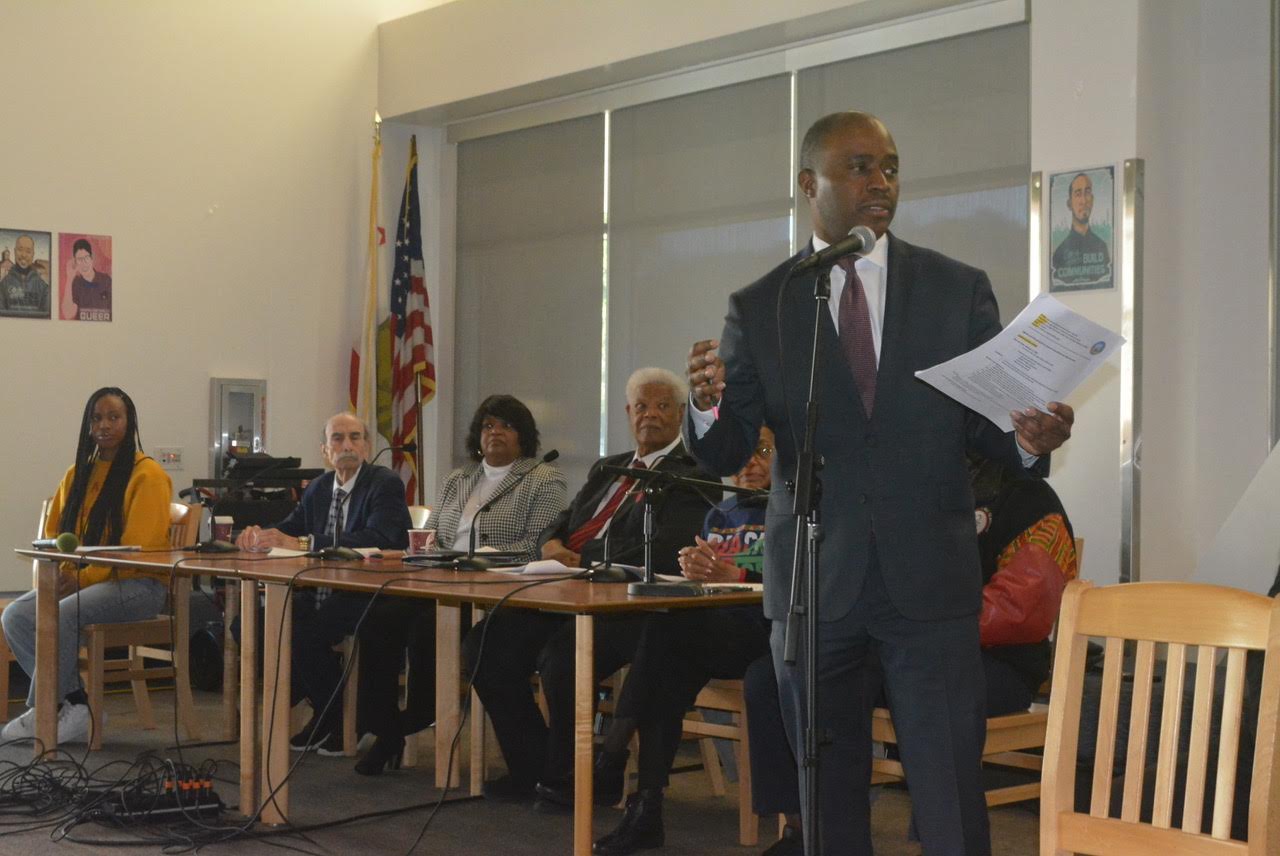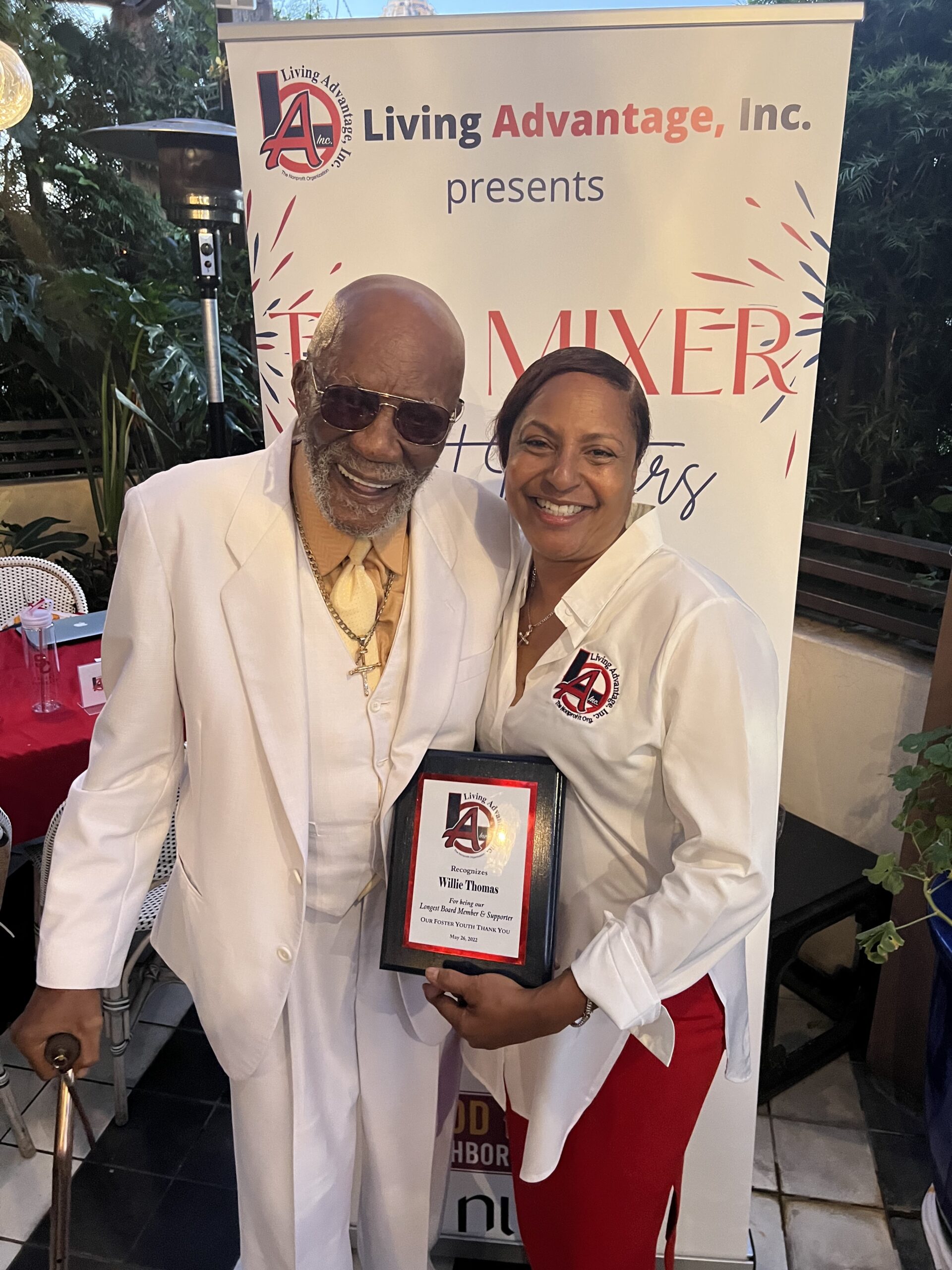Antonio Ray Harvey | California Black Media
California State Superintendent of Public Instruction (SSPI) hosted an oral history presentation for Black History Month at DeAnza High School in the Contra Costa County city of Richmond.
In front of a diverse group of public officials, guests and students from five other campuses within the West Contra Costa Unified School District — attending in person and by ZOOM — panelists shared their experiences of Black life in the city 16 miles northeast of San Francisco.
“I am a believer that the best history is living history and today you have an opportunity to hear from many who have made history in this community,” Thurmond told the students. “They are incredible leaders who have watched this city and how it has grown, evolved, and changed. They share this with you from a first-person narrative.”
An educator, social worker, and public-school parent, Thurmond served on the Richmond City Council, the West Contra Costa Unified School Board, and in the California State Assembly representing District 15 before he was elected SSPI in 2018.
At the Black History Month event, Thurmond introduced several community elders who have made significant contributions to the city of Richmond.
Those special guests included Nathaniel “Nat” Bates, eight-time Richmond City Council member; Audrey Miles, former West Contra Costa Unified School District Board President, the first Black woman elected to that role; and Myrtle Braxton, former Chair of the Richmond Parks and Recreation Commission and former member of the National Parks and Recreation Commission.
John Marquez, Contra Costa College board member and former Richmond City Council member for 18 years; and Ahmad Anderson – son of former Richmond Mayor Irma Anderson and member of the Cal Berkeley Football Hall of Fame –were also panelists who spoke during the 90-minute discussion that ended with a question-and-answer segment.
A brief video tribute was paid to Irma Anderson during the presentation. Anderson was the first Black woman elected as City Council member and Mayor of Richmond. At the time of her election, she was the first Black woman to be elected to a major California city. Mrs. Anderson passed away on Jan. 24 at the age of 93.
“Mayor Anderson and I were neighbors. We lived three doors away from each other,” Braxton said. “Ahmad, her son, and my children grew up together. I knew Mayor Anderson personally and I knew how community-oriented she was in the city of Richmond and our neighborhood. I was so proud of her because she would listen to you and do whatever she could to help you.”
Incorporated on Aug. 7, 1905, and instituted as a charter city on March 24, 1909, the city of Richmond had a population of 115,677 residents in 2021, according to the City of Richmond Community Development Department. The Black or African American community makes up 19.1% of the city’s population. The largest ethnic population in Richmond is Hispanic or Latinos at 44.6%, followed by Whites at 20.1% and Asians at 14.4%.
Between 1940 and 1945, tens of thousands of workers from all over the country moved to Richmond to support shipyard industries during World War II. Nat Bates told the students he was part of that “great migration westward” as many African Americans from the Deep South states were seeking opportunities.
Many Black Southerners ended up in the Bay Area cities of Oakland, Marin City, San Francisco, Berkeley, San Pablo, Pinole, and Vallejo. Bates’s final destination was Richmond.
“I arrived in California right after the bombing of Pearl Harbor (Dec. 7, 1945) as many of us from the south did,” Bates said. “And we came to California primarily for the job opportunities. It was the shipyards, and we were preparing the fight for the military. There was a shortage of personnel in the city of Richmond to build ships because most of the young men were inducted into the military.”
As Richmond’s population expanded after World War II, members of the Black community began to get involved with city politics, open businesses such as the Hilltop Mall, and create housing, Bates said.
“The Hilltop shopping center was an undertaking because it created a lot of jobs and created a significant (amount) of revenue,” Bates added.
The City of Richmond has had 21 Black elected officials between 1961 and 2023. The panel encouraged the students to learn more about Black history, and the background of Richmond, and get involved in government at the city, county, state, and federal levels.
Bates said he has had a relationship with 11 U.S. presidents – Republicans and Democrats – during his time in Richmond politics, which started in 1967.
“It’s not a racial thing. There are a lot of people willing to help you and assist you,” Bates told the students. “So, open your hearts, open the doors, and some of you may well be a U.S. Senator, a governor, a professor, or maybe the President of the United States.”







